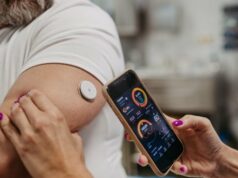
A six-year-old boy with type 1 diabetes has raised more than £16,000 ($20,000) by selling pumpkins to buy a diabetic service dog.
Ian Unger, from Michigan in America, launched his campaign after being told he could no longer get the school bus anymore without a trained aide.
His fundraising goal went viral after it was posted on Facebook, and now Ian has reached his target.
Diabetic service or alert dogs are trained to detect high (hyperglycemia) or low (hypoglycemia) blood sugar in people with diabetes so they can take the relevant action. Diabetic service dogs typically have an average wait time of six months in the US, with costs determined by what a person requires.
Because they can be costly, Ian decided the answer was to grow and sell pumpkins to members of the public.
His mum set up a Facebook group to help promote his idea and the post went viral. He very quickly sold all his pumpkins, but donations continued to pour in with more than 600 people having donated, helping him exceed his fundraising limit in just three days.
His mother Katrina Christensen thinks having a service dog will help Ian considerably and allow him to travel to school again with his friends. Previously she had been told that after the family’s request for an aide was denied.
Speaking to US publication WZZM, Christensen said: “We asked for one; it was declined. Their plan was to put him on an empty bus by himself and take him to school after school starts. And for Ian, hes so social. He was devastated.”
Ian, who attends McNaughton Elementary School, was diagnosed with type 1 diabetes just before his fourth birthday. He was rushed to hospital after his speech became slurred and he was barely able to stand up.
He was admitted to the intensive care unit as he had unknowingly been suffering from diabetic ketoacidosis (DKA), which if left untreated can lead to a coma.
Since then he has been managing his condition with insulin injections, an insulin pump and a continuous glucose monitor, but has struggled with incidences of low blood sugar.
You can make a donation to Ians fundraising here.
Picture credit: Katrina Christensen








